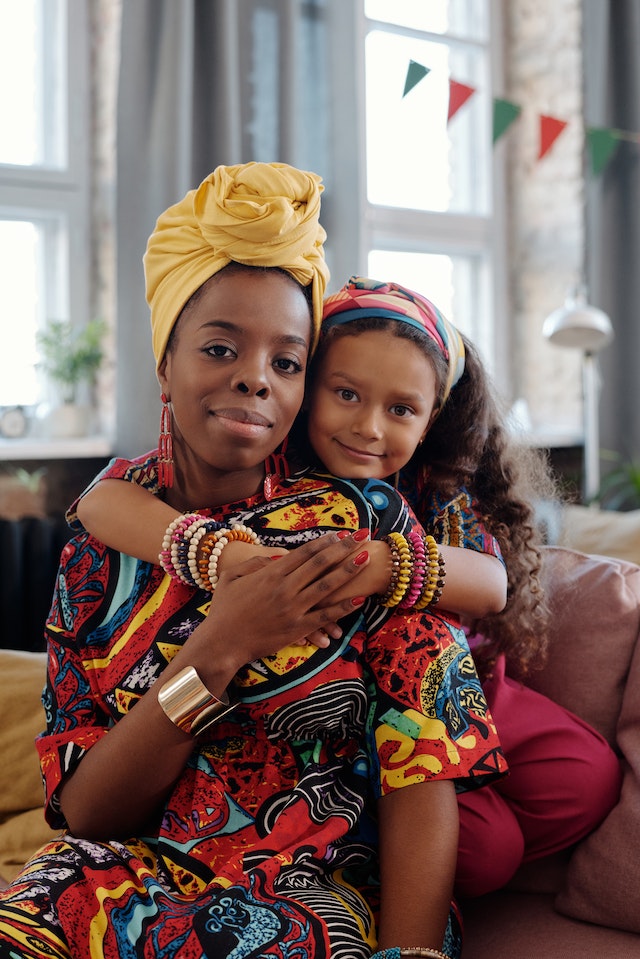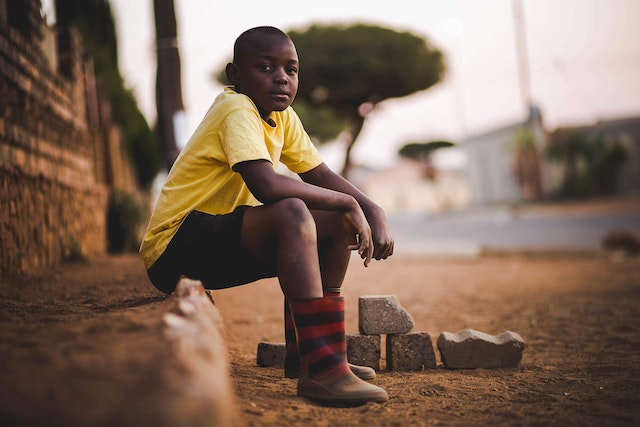There are 11 official languages in South Africa, and in this educative post, we’ll share with the language landscape of one of the most populous countries in Africa. In fact, we’ll share with insightful details about each language.
South Africa, a nation rich in diversity and culture, proudly boasts a remarkable linguistic tapestry woven from the threads of eleven official languages.
This linguistic kaleidoscope reflects the nation’s complex history and vibrant heritage, making it a fascinating subject of exploration and understanding.
From Zulu to Afrikaans, from Sesotho to English, these languages serve as a means of communication and stand as pillars of identity, uniting a nation defined by its multitude of voices.
South Africa is also a great example of African countries when it comes to growing it’s educational sectors. You should check out our series of articles about the best high schools in South Africa, cheapest universities in South Africa for international students, and more.
In this introduction, we embark on a journey to unravel the significance, history, and impact of the eleven official languages in South Africa, shedding light on their role in shaping the nation’s past, present, and future.

Is South Africa the only country with 11 official languages?
While most countries designate one or two official national languages, some, like the United States and Mexico, have none. In contrast, South Africa stands out with its remarkable 11 official languages.
Notably, there’s the potential for this number to grow to 12 should South African Sign Language gain official recognition from the country’s Parliament.
The 11 Official Languages In South Africa
| Language | Subfamily | 1st language share | 1st language users | 2nd language users | All users |
| isiNdebele | Nguni | 2.1% | 1.1 million | 1.4 million | 2.5 million |
| English | West Germanic | 9.6% | 4.9 million | 11.0 million | 15.9 million |
| Afrikaans | Low Franconian | 13.5% | 6.9 million | 10.3 million | 17.2 million |
| isiXhosa | Nguni | 16% | 8.1 million | 11.0 million | 19.1 million |
| isiZulu | Nguni | 22.7% | 11.6 million | 15.7 million | 27.3 million |
| Sesotho | Sotho-Tswana | 7.6% | 3.8 million | 7.9 million | 11.8 million |
| Sesotho sa Leboa (Sepedi) | Sotho-Tswana | 9.1% | 4.6 million | 9.1 million | 13.8 million |
| Setswana | Sotho-Tswana | 8% | 4.1 million | 7.7 million | 11.8 million |
| siSwati | Nguni | 2.5% | 1.3 million | 2.4 million | 3.7 million |
| Tshivenda | Sotho-Makua-Venda | 2.4% | 1.2 million | 1.7 million | 2.9 million |
| Xitsonga | Tswa-Ronga | 4.5% | 2.3 million | 3.4-million | 5.7 million |
1. IsiNdebele
IsiNdebele, also known as Southern Ndebele, is one of South Africa’s 11 official languages and is primarily spoken in Mpumalanga and Gauteng. This Nguni language shares linguistic roots with isiZulu, isiXhosa, and siSwati.
It should be distinct from Northern Ndebele, commonly called Matabele, which is more closely related to isiZulu and serves as an official language in Zimbabwe.
Within South Africa, the speakers of isiNdebele as their first language number 1,090,223, constituting just 2.1% of the country’s total population.
Among these first-language speakers, 97% are of black ethnicity, while 0.9% are of Indian or Asian descent, 0.8% are classified as colored, 0.8% as white, and 0.5% as other.
IsiNdebele is predominantly spoken by 2.6% of black South Africans, slightly fewer than the 2.9% who use English as their primary language at home.
In contrast, its usage is limited among other population groups, with only 0.2% of the colored and white populations having it as their home language and 0.8% of Indian or Asian individuals. Additionally, 2.1% of people identifying as “other” also speak isiNdebele.
Related: List of the 774 Local Governments in South Africa
2. English
English is significant in South African public life and finds widespread use in government, business, and the media. However, it is primarily concentrated in urban areas as a first language.
In 1910 English and Dutch were declared the official languages of the newly formed Union of South Africa. Remarkably, English has maintained its official status throughout the country’s history.
Among South Africa’s population, 4,892,623 individuals regard English as their first language, accounting for 9.6% of the total population. Further, 32.8% of first-language English speakers are white, 23.9% are black, 22.4% are Indian, and 19.3% are colored.
Notably, 86.1% of Indian South Africans consider English their home language, while 35.9% of white South Africans use it as their first language. Additionally, 20.8% of colored individuals and 2.9% of black South Africans also count English as their first language.
4. Afrikaans

Afrikaans, which emerged from a 17th-century Dutch dialect brought to South Africa in 1652 during the Dutch colonization of the Cape of Good Hope, hold a prominent place in South Africa today. Remarkably, it serves as the majority language in the Northern Cape.
The journey to becoming an official language in South Africa began with the Official Languages of the Union Act of 1925, which retrospectively conferred official status on Afrikaans in 1910.
Among South Africa’s population, 6,855,082 individuals consider Afrikaans their first language, constituting 13.5% of their total population. Delving deeper into this, 50.2% of Afrikaans speakers are colored, 39.5% are white, 8.8% are black, 0.9% are of Indian or Asian descent, and 0.6% belong to other racial groups.
Notably, 75.8% of colored South Africans use Afrikaans, while 60.8% of whites consider it their home language. Additionally, 4.6% of Indian or Asian individuals and 1.5% of black South Africans also speak Afrikaans as their first language.
Related: Top 10 Online Schools in South Africa
5. isiXhosa
IsiXhosa, the dominant language of the Eastern Cape, holds the distinction of being South Africa’s second-largest language, trailing only isiZulu. Classified as a Nguni language, along with isiNdebele, isiZulu, and siSwati, it also exhibits some influence from the Khoekhoe languages.
Among South Africans who consider isiXhosa their primary language, numbering 8,154,258, they constitute 16% of the nation’s total population. Of these first-language isiXhosa speakers, the breakdown is as follows: 99.4% are black, 0.3% are colored, 0.2% are white, and 0.1% are Indian or Asian.
Regarding population groups, isiXhosa is spoken by 20.1% of black South Africans, making it the second most prevalent language after isiZulu within this group. Among colored individuals, 0.6% claim isiXhosa as their home language, along with 0.4% of Indians, 0.3% of whites, and 1.9% of those who identify as “other.”
6. isiZulu
IsiZulu, the most widely spoken language in South Africa, is the first language for nearly a quarter of the population and is particularly dominant in KwaZulu-Natal. This Nguni language, akin to isiNdebele, isiXhosa, and siSwati, plays a pivotal role in the country’s linguistic landscape.
Among South Africans who consider isiZulu their primary language, totaling 11,587,374 individuals, they comprise 22.7% of the nation’s total population.
An overwhelming 99.4% of first-language isiZulu speakers are of black ethnicity, while 0.2% are colored, 0.1% are white, and 0.1% are Indian or Asian.
When examining population groups, isiZulu finds its voice among 28.5% of black South Africans, a higher percentage than any other language.
Furthermore, 1.3% of Indian or Asian individuals, 0.5% of coloreds, 0.4% of whites, and 4.1% of those identifying as “other” also call isiZulu their home language.
Also Read: What is Bantu Education in South Africa? All You Need to Know
7. Sesotho
Sesotho, the language of the Free State, is the primary language for 3,798,915 South Africans, making up 7.6% of the total population. It belongs to the Sotho language group, alongside Sesotho sa Leboa and Setswana.
Among first-language Sesotho speakers, 98.7% are of black ethnicity, with 0.6% being colored, 0.5% white, and 0.1% Indian or Asian.
Regarding population groups, Sesotho is spoken by 9.4% of black South Africans, making it a significant language within this group. Additionally, it serves as the home language for 0.5% of colored individuals, 0.4% of both white and Indian/Asian individuals, and 1.7% of those who identify as “other.”
8. Sesotho sa Leboa (Sepedi)
The language known as Sesotho sa Leboa or Sepedi has undergone some debate regarding its official name. The 1993 interim Constitution was referred to as Sesotho sa Leboa, but this was later changed to Sepedi in the final Constitution of 1996. The discussion over the correct name persists.
Most language experts and native speakers assert that Sesotho sa Leboa is the accurate name, considering Sepedi a dialect. Notably, in a study of language policies at six South African universities, five used Sesotho sa Leboa, while one used Sepedi. However, the Department of Basic Education and Statistics South Africa employs Sepedi as the language’s name.
Sesotho sa Leboa ranks South Africa’s third-largest African language, following isiZulu and isiXhosa, predominantly spoken in Limpopo. Similar to Sesotho and Setswana, it falls within the Sotho language group.
For 4,618,576 individuals or 9.1% of the total population, Sesotho sa Leboa serves as their first language. Of these first-language speakers, 99.7% are of black ethnicity, with 0.1% being colored, 0.1% white, and 0.1% Indian or Asian.
Breaking down population groups, Sesotho sa Leboa is spoken by 11.4% of black South Africans. As for other groups, it is the home language for a modest 0.2% of Indians, 0.1% of colored individuals, 0.1% of whites, and 0.6% of those identifying as “other.”
Related: Top 10 Nursing Colleges in South Africa
9. Setswana
Setswana, spoken in the North West and neighboring Botswana, belongs to the Tswanaic language within the Sotho-Tswana subfamily, alongside Sesotho and Sesotho sa Leboa. It boasts 3,996,951 speakers, constituting 8% of South Africa’s population. Among these speakers, 98.3% are black, 1% are colored, 0.1% are Indian or Asian, and 0.1% are white.
Setswana is the language of choice for 9.9% of black South Africans, ranking as the third-largest language in this group. Additionally, it serves as the first language for 0.9% of colored individuals, 0.4% of Indians and whites, and 2.4% of those identifying as “other.”
10. SiSwati
SiSwati is primarily spoken in Mpumalanga, curving around the eastern border, nearly encircling Swaziland. As a Nguni language, it shares its roots with isiNdebele, isiXhosa, and isiZulu.
The 1,297,046 SiSwati speakers comprise 2.5% of South Africa’s population, ranking it the country’s third-smallest language. Of first-language SiSwati speakers, 99.3% are black, 0.3% are colored, 0.2% are white, and 0.1% are Indian or Asian.
In the overall population, SiSwati is spoken by 3.2% of black South Africans, approximately 0.1% of other population groups, and 0.5% of those who describe themselves as “other.”
Related: Full List of States and Capitals in Nigeria and their Slogans
11. Tshivenda
Tshivenda is a unique language within South Africa’s major African languages, falling under the broader Sotho-Makua-Venda subfamily but outside the Sotho group. It is primarily spoken in the far northeast of Limpopo.
Of the 1,209,388 South Africans who speak Tshivenda, they represent 2.4% of the country’s population, making it the second-smallest language after isiNdebele. Among first-language Tshivenda speakers, 99.4% are black, 0.2% are colored, 0.2% are white, and 0.1% are Indian or Asian.
Tshivenda finds a voice among 3% of black South Africans, a minimal presence among other population groups (0.1%), and is spoken by 0.5% of those identifying as “other.”
12. Xitsonga
Xitsonga, a minority language concentrated along South Africa’s northeast border with Mozambique, is also spoken in Mozambique. The broader Nguni-Tsonga language subfamily falls into the Tswa-Ronga group, distinguishing itself from the Nguni languages, including isiNdebele, isiXhosa, isiZulu, and siSwati.
The 2,277,148 South Africans who speak Xitsonga as their home language constitute 4.5% of the country’s total population. Among first-language Xitsonga speakers, 99.1% are black, 0.2% are white, 0.1% are colored, and 0.1% are Indian or Asian.
Xitsonga is spoken by 5.6% of black South Africans, 0.2% of Indians, 0.1% of whites, 0.05% of coloreds, and 3.9% of those who describe themselves as “other.”
What are the Main languages of each province?
Of all the 9 provinces of South Africa, here are the main languages in each state below:
- Free State – Sesotho (64.2%), Afrikaans (12.7%)
- Gauteng – isiZulu (19.8%), English (13.3%), Afrikaans (12.4%), Sesotho (11.6%)
- Eastern Cape – isiXhosa (78.8%), Afrikaans (10.6%)
- KwaZulu-Natal – isiZulu (77.8%), English (13.2%)
- Mpumalanga – siSwati (27.7%), isiZulu (24.1%), Xitsonga (10.4%), isiNdebele (10.1%)
- Northern Cape – Afrikaans (53.8%), Setswana (33.1%)
- Limpopo – Sesotho sa Leboa (52.9%), Xitsonga (17%), Tshivenda (16.7%)
- North West – Setswana (63.4%), Afrikaans (9%)
- Western Cape – Afrikaans (49.7%), isiXhosa (24.7%), English (20.3%)
FAQ About Languages of South Africa
Which are the most spoken languages in South Africa?
According to businestech.co.za, nationally, just over one quarter (25,3%) of individuals speak isiZulu at home, while 14.8% of individuals speak isiXhosa, and 12.2% speak Afrikaans.
English is spoken by 8.1% of individuals at home, making it the sixth most common home language in South Africa.
English is, however, the second most commonly spoken language outside the household (16.6%) after isiZulu (25.1%), and preceding. IsiXhosa (12.8%).
What is the Largest Language in South Africa?
The most prominent language in South Africa is IsiZulu, spoken by nearly 23% of the population. Other official languages include isiXhosa (16%), Afrikaans (13.5%), English (10%), Sesotho sa Leboa (9%), Setswana and Sesotho (both 8%), Xitsonga (4.5%), siSwati and Tshivenda (both 2.5%), and isiNdebele (2%).
What is the Youngest Language in South Africa?
The youngest language in South Africa is Afrikaans, officially recognized at just 100 years old. It emerged from Dutch, French, and German influences during the 17th and 18th centuries and is spoken by 7 million South Africans.
Is South Africa the Only Country with 11 Official Languages?
Most countries have one or two official languages, and some, like the United States and Mexico, have none. South Africa stands out with 11 official languages. There’s even a proposal to add South African Sign Language as the 12th official language.
What is the Common Greeting in South Africa?
The standard greeting in South Africa is “Howzit,” used universally regardless of race. Initially meaning “how are you,” it has evolved into a casual way of saying “hello.”
How Many Official Languages are in South Africa?
South Africa boasts eleven official languages, including English, Afrikaans, and nine ethnic languages. While many South Africans are multilingual, English is the most widely spoken and the language of official business and commerce.
Also Read: Top 10 Richest States in Nigeria
11 Official Languages in South Africa (Summary)
Recognizing 11 official languages in South Africa is a testament to the country’s rich cultural diversity and commitment to inclusivity.:
- Ndebele
- Northern Sotho
- Sotho
- SiSwati
- Tsonga
- Tswana
- Venda
- Xhosa
- Zulu
- Afrikaans
- South African English
This linguistic diversity reflects the nation’s complex history and serves as a foundation for fostering unity and understanding among its diverse population.
It symbolizes South Africa’s dedication to embracing and preserving its cultural heritage while striving for a more inclusive and harmonious future.





